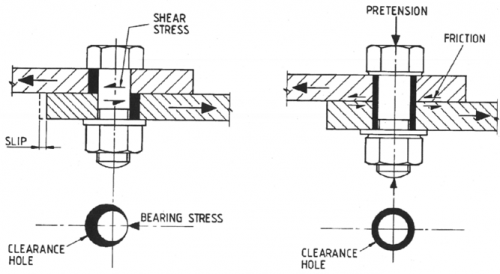GordnadoCRD wrote:
tjkj2002 wrote:
GordnadoCRD wrote:
That only holds true if the thread pitch is the same, and fine threads almost always have more tpi than coarse. it's works just like pushing something up a hill. It requires less force (torque) to move something up a 5% grade, than the force required to move the same something up a 10% grade. Or more relevantly stated, the equal force @limit applied to something weighing 100 lbs pushing up a 5% grade, will only be capable of pushing 50 lbs up a 10% grade.
Bolt diameter, Friction and Torque being equal, fine threads exert more clamping force than coarse threads.
IF you torque a 3/8 24 bolt(dry) to 30lbs-ft and torque a 3/8 16(dry) bolt to 30lbs-ft both are torqued to the exact same 30lbs-ft.Both have the same clamping force if both bolts have identical dimensions besides one being coarse thread and the other being fine thread. What you are talking about is makes no sense when talking about bolts and torque.gearing for differentials your comments make sense but not torquing a bolt.
I invite you to test that theory!
A couple pieces of reasonably thick UHMW drilled and tapped for each threading as you state. Sandwich
A pressure sensor between them, and measure the force.

Prove to me that I'm wrong and I'll retract my statement.

If the 2 bolts are the same dimensions besides the thread pitch they will have the same clamping force if both are torqued the same.
Fine threaded bolts are stronger than the corresponding coarse threaded bolts of the same hardness. This is in both tension and shear due to the fine threaded bolts having a slightly larger tensile stress area and minor diameter.
Fine threads have less tendency to loosen under vibration due to their having a smaller helix angle than coarse threads. Fine thread Locking Insert grip coils are more flexible than coarse thread insert corresponding size grip coils, and are less likely to take a set under vibration conditions.
Fine threads because of their finer pitch allow for finer adjustments in those applications that need this characteristic.
Fine threads can be more easily tapped into difficult to tap materials, and thin walled sections.
Fine threads require less tightening torque to develop equivalent preloads to the corresponding coarse thread bolt sizes.
Last sentence,preload is not the same as clamping force.Quote:
Negative sides of fine threaded fasteners:
Fine threads are more susceptible to galling than coarse threads.
They need longer thread engagements and are more prone to damage and thread fouling.
They are also less suitable for high speed assembly since they are more likely to seize when being tightened.
The potential benefits of fine threads are:
Size for size a fine thread is stronger than a coarse thread. This is both in tension (because of the larger stress area) and shear (because of their larger minor diameter).
Because of the smaller pitch they allow finer adjustments in applications that need such a feature.
Fine threads can be more easily tapped into hard materials and thin walled tubes.
Fine threads require less torque to develop equivalent bolt preloads.
Fine threads have less tendency to loosen since the thread incline is smaller and hence so is the off torque.
Again "preload",not the same as clamping force.True. All true. But because it's something different it answers a different question.

So get a pressure sensor and show me if the clamping force is the same. I know you've got precision torque wrenches and probably free access to strong enough materials to prove your claim. The bolt sizes are irrelevant, as long as they are the same size and fine thread vs coarse thread. The specific torque value is also irrelevant as long as it's the same for both. All can be adjusted to test within the force range of the sensor.
 So show me.
So show me. 



